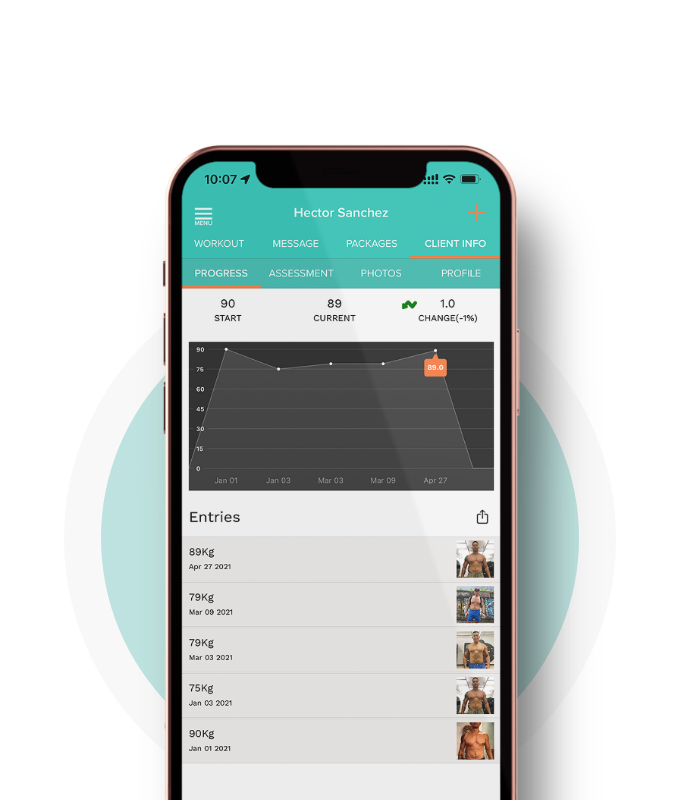How To Find Your Ideal Personal Trainer
What used to be considered a luxury for the rich is now commonplace: personal training. The intensive 1:1 support is ideal for achieving individual goals.
The job of a good personal trainer is to accompany his customers during training. It should show you the correct movements, explain how to do the exercises correctly, and warn you of possible injury. It doesn't matter which goal is pursued: Every training session should be accompanied by suitable personal support. Which goals can be achieved with it, and what constitutes good personal training? We answer...
What does a personal trainer do?
Many people still have the image of a muscular fitness trainer with washboard abs who "drills" the customer through the gym with large weights. Nowadays, a personal trainer can and must do much more than just create an individual training plan. Fitness training is still in the foreground - especially training in strength, endurance, flexibility, and coordination. A well-trained trainer also masters elements of nutritional advice and basic coaching.
How to find your ideal personal trainer
First, make yourself aware of your physical goals: Would you like to build muscle, improve your condition or relieve pain? We recommend looking at the provider's training: a sports scientist or physiotherapist first has a high level of basic qualification. This is especially important if you haven't exercised for a long time and/or have previous illnesses. A good personal trainer has a lot of practical experience in the areas that he offers. He responds to the individual needs of the client and shows empathy. It is also important that the interpersonal chemistry is right.
That is what constitutes good personal training:
- Introductory talk at the beginning: The trainer finds out whether and what pre-existing illnesses his client has, what goals he is pursuing and why, and how he wants to achieve them realistically.
- Diagnostics: The trainer asks about the "current status" of his client to be able to train with him in a targeted manner. If the customer wants to improve their endurance, for example, an endurance test is carried out. If he has back pain, for example, the muscle status is recorded and muscle shortening is measured.
- The training is very varied in terms of methods and possibly also locations (at home, in the studio, or in nature). A monotonous workout can quickly become boring. Most importantly, it's fun!
- The training success should be measured after three to six months. That is also motivating.
- In a final discussion, it is discussed whether the client is on the right track and how further training should be designed.
The advantages of personal training
The biggest advantage is the intensive support. Of course, good training can also take place in small groups, but to speak of "personal training" here is incorrect from my point of view. In today's fitness area, people often speak of "personal training" during personal instruction on the equipment. The individual and sustainable aspects that make up good personal training are missing here.
Overall, one can say: Going through a process of change to a more active and healthier lifestyle takes time! Any behavior change is difficult because the customer must be able to leave the comfort zone and get involved in new and unknown things. This can work if the customer is taken "by the hand" and coached.
Who is personal training suitable for?
In principle, personal training is suitable for everyone who wants to train effectively and can do so from a health perspective. With elderly or sick people, you start training again much earlier these days than you did in the past. This also increases the demands on the trainer. In health sports, in particular, it makes sense to start training again as seamlessly as possible after therapy. This ensures that the training effects achieved do not fizzle out and that the training is also integrated into everyday life.
Personal training is also useful if you are overweight or have limited coordination. However, this assumes that the trainer has an appropriate educational background. Specializations in the area of ??personal training can now be found more and more frequently.
Bottom Line
Many preventive goals can be achieved with personal training, such as preventing back pain or cardiovascular diseases, optimizing weight, or maintaining mobility in old age. To achieve lasting effects, it is necessary that the training is integrated into everyday life like brushing teeth.
Even training sessions that take place once a week can lead to success with untrained people or serve as maintenance training. Two to three training sessions per week lead to good results in their health. If the client is pursuing goals in the area of ??improving athletic performance, it may also be necessary to train more frequently.
Coach/The Training Notebook Founder
Hector Sanchez




